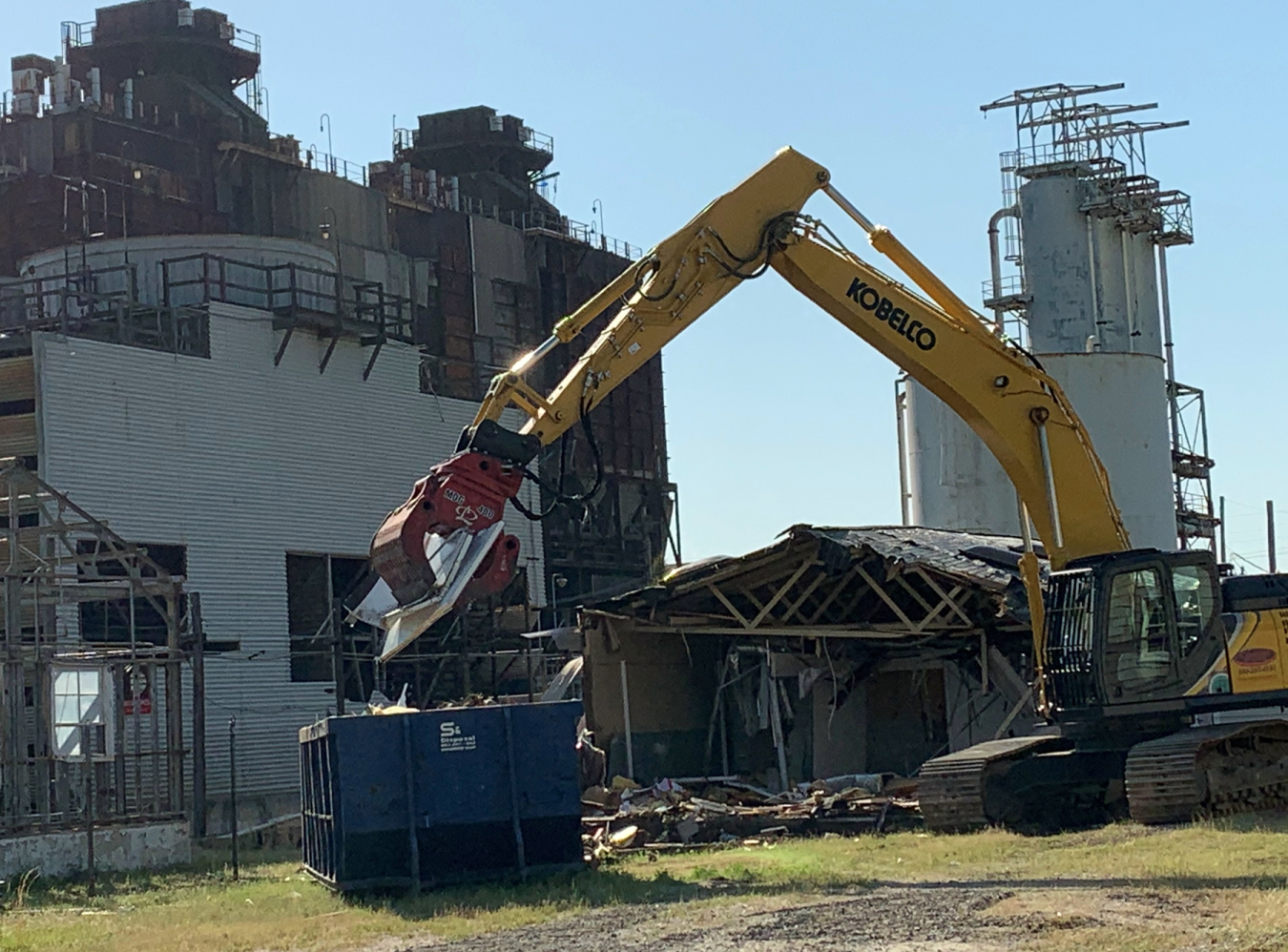EM is set to further alter the SRS skyline over the next five months with the demolition of five buildings in an area of the site where Cold War workers once created heavy water for reactors and produced power & steam in a five-story coal fired powerhouse
Office of Environmental Management
May 4, 2021
AIKEN, S.C. – EM is set to further alter the Savannah River Site (SRS) skyline over the next five months with the demolition of five buildings in an area of the site where Cold War workers once created heavy water for reactors and produced power and steam in a five-story coal-fired powerhouse.
The deactivation and demolition (D&D) project in the site’s D Area comes after crews tore down a maintenance facility and two smaller structures in D Area earlier this year.
“For me, the most impressive part is the footprint reduction, which is expected to be accomplished with the D&D of eight buildings this year,” said Kelsey Holcomb, a project manager with SRS management-and-operations contractor Savannah River Nuclear Solutions (SRNS).
SRNS subcontracted with a small business in its mentor-protégé program to complete the three teardowns earlier this year. The program is a Department initiative designed to help small businesses enhance their capabilities as subcontractors across the DOE complex. The SRNS program includes the Mentor-Protégé Center of Excellence, where mentor companies share best practices and lessons learned.
“We find it rewarding to work with small businesses like CTI and Associates,” Holcomb said. “Their safety record is outstanding. SRNS benefits from a talented subcontracted workforce and CTI benefits from the SRS facility experience we share with them.”
Holcomb noted that 13 additional structures in D Area are scheduled for demolition next year. And eventually, workers will take down the powerhouse.
“The largest single challenge lies ahead: D&D of the D-Area powerhouse — a mammoth, 66,000-square-foot building, standing 105 feet tall, originally capable of generating 75 million watts of power,” Holcomb said.
D Area holds many fond memories for SRNS D&D subject-matter expert Steve Willingham since he began his career there in 1982.
“Traveling to D Area is a bit like coming home for me,” said Willingham. “And it’s a little sad now to arrive and see how much things have changed. It’s just amazing to witness what has been accomplished with the deactivation and decommissioning of these facilities. Really, we’re finding that balance where we are honoring the past while environmentally protecting the future.”
SRNS has achieved cleanup of 85% of the site’s 310 square miles since becoming the SRS management-and-operations contractor in 2008.
“The safety and health of the environment, including those living and working in the area, is the driver,” said Holcomb. “But from a long-term perspective, we want to restore the site back to its original natural condition.”
SRNS began cleanup in D Area in 2014 with the removal of 400,000 cubic yards of ashen soil from pond-like basins. In total, the contractor safely and cost-effectively remediated over 90 acres of federal property, protecting the environment, including the nearby Savannah River.
In another project completed last year, workers returned 12 acres of acidified soil in a former coal yard to a more neutral, environmentally safe condition. Coal used to feed the powerhouse boilers.
To accomplish the work, crews thoroughly mixed 1,000 tons of fine-grade limestone four-feet-deep throughout the yard. This innovative approach expedited the timeline and significantly reduced costs associated with traditional cleanup methods for projects of similar size and scale. At project completion, the pH of the coal yard soil had changed from that of a mildly acidic cola-based soft drink — 3.0 — to a normal level for the region, at 5.5. The pH is a scale used to specify acidity.
To receive the latest news and updates about the Office of Environmental Management, submit your e-mail address.

